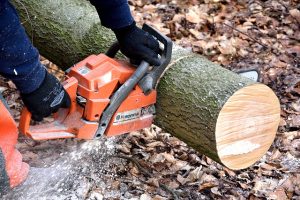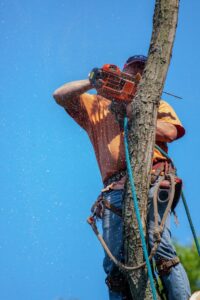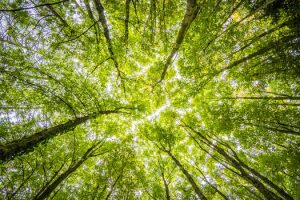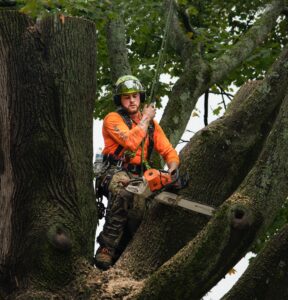How Tree Companies Price Their Services?
Understanding How Tree Companies Price Their Services: Insights from Truco Services, Inc.
Pricing tree services can be a complex task for tree companies, as several factors influence the cost of the work. Tree companies, like Truco Services, Inc., carefully consider various elements when determining their prices. In this article, we will explore the key factors that tree companies take into account when pricing their services, with a particular focus on Truco Services, Inc.’s approach. By understanding the pricing process, you can gain insight into how tree companies establish their rates and make informed decisions when hiring professional tree services.
Factors Influencing Pricing:
Specific Services:
Different tree services, such as pruning, removal, or inspections, require varying levels of expertise, equipment, and labor. The type and complexity of the service being provided significantly impact the pricing structure. Truco Services, Inc. offers a wide range of tree services and carefully assesses the requirements of each job to provide accurate pricing estimates.
Tree Size and Condition:
The size, species, and overall health of the trees play a crucial role in determining the cost of the work. Larger trees require more equipment, labor, and time to complete the job, which can result in higher charges. Similarly, diseased or hazardous trees may require additional safety measures, affecting the overall cost. Truco Services, Inc. takes into account these factors when pricing their tree services.
Location and Accessibility:
The location of the tree and its accessibility influence the pricing. Trees located in hard-to-reach areas or with limited clearance may require specialized equipment or additional labor, impacting the overall cost. Truco Services, Inc. considers the location and accessibility of trees during the estimation process to provide accurate pricing for their services.
Seasonal Demand:
Tree companies often experience variations in demand throughout the year. The winter season, for instance, might be less busy compared to the peak seasons of spring and summer. During peak seasons, tree companies may have a higher workload, leading to increased prices due to supply and demand dynamics. Truco Services, Inc. adjusts their prices accordingly, considering seasonal variations in demand.
Scope of Work and Timeframe:
The complexity and extent of the job influence the pricing. Factors such as the number of trees, the extent of pruning or removal required, and the estimated duration of the project are considered when determining the price. Truco Services, Inc. carefully assesses the scope of work and timeframe to provide accurate and transparent pricing to their clients.
Truco Services, Inc.’s Pricing Approach:
Truco Services, Inc. follows a comprehensive approach to pricing their tree services, taking into account the factors mentioned above. They understand that every job is unique, and their experienced arborists conduct thorough assessments before providing pricing estimates. By considering the specific services required, tree size and condition, location and accessibility, seasonal demand, and the scope of work, Truco Services, Inc. ensures that their pricing accurately reflects the complexity and requirements of each job.
Additionally, Truco Services, Inc. aims to offer competitive pricing without compromising on the quality of their services. They take pride in providing practical solutions and professional arboricultural expertise while maintaining fair pricing structures. By offering transparent pricing, they help clients understand the breakdown of costs and make informed decisions.
Pricing tree services involves careful consideration of various factors, including the specific services required, tree size and condition, location and accessibility, seasonal demand, and the scope of work. Truco Services, Inc. exemplifies a tree service company that values transparency, accuracy, and fair pricing. By understanding the complexity of tree work and utilizing their arboricultural expertise, they provide clients with reliable pricing estimates. When hiring professional tree services, it is crucial to engage with reputable companies like Truco Services, Inc. that offer transparent pricing structures and prioritize customer satisfaction.
About Murray, Utah
Murray is a city situated on the Wasatch Front in the core of Salt Lake Valley in the U.S. state of Utah. Named for territorial governor Eli Murray, it is the state's fourteenth largest city. According to the 2020 census, Murray had a population of 50,637. Murray shares borders with Taylorsville, Holladay, South Salt Lake and West Jordan, Utah. Once teeming with heavy industry, Murray's industrial sector now has little trace and has been replaced by major mercantile sectors. Known for its central location in Salt Lake County, Murray has been called the Hub of Salt Lake County. Unlike most of its neighboring communities, Murray operates its own police, fire, power, water, library, and parks and recreation departments and has its own school district. While maintaining many of its own services, Murray has one of the lowest city tax rates in the state.
Neighborhoods in Murray, Utah
Murray Oakes, Grant Park, Southwood Park, Murray Park, Murray Park Restrooms, Willow Pond Park, Neighborhood Veterinary Care
Things To Do in Murray, Utah
Bus Stops in Murray, Utah to Truco Services, Inc.
Bus Stop in Murray Central Station (Bay C) Murray, Utah to Truco Services, Inc.
Bus Stop in State St @ 4801 S Murray, Utah to Truco Services, Inc.
Bus Stop in Murray North Station Murray, Utah to Truco Services, Inc.
Bus Stop in State St @ 4949 S Murray, Utah to Truco Services, Inc.
Bus Stop in Murray Central Frontrunner/Trax Station Murray, Utah to Truco Services, Inc.
Bus Stop in Murray Blvd / Vine St (SB) Murray, Utah to Truco Services, Inc.
Bus Stop in State St @ 3925 S Murray, Utah to Truco Services, Inc.
Bus Stop in State St @ 4824 S Murray, Utah to Truco Services, Inc.
Bus Stop in State St @ 5223 S Murray, Utah to Truco Services, Inc.
Bus Stop in Murray Blvd / Allendale Dr (NB) Murray, Utah to Truco Services, Inc.
Bus Stop in Murray Blvd @ 5039 S Murray, Utah to Truco Services, Inc.
Bus Stop in State St @ 4721 S Murray, Utah to Truco Services, Inc.
Driving Directions in Murray, Utah to Truco Services, Inc.
Driving Directions from Woodruff Tree Trimming and Removal to 4640 Commerce Dr, Murray, UT 84107, USA
Driving Directions from Reliable Tree Care to 4640 Commerce Dr, Murray, UT 84107, USA
Driving Directions from Tree Pro-Tech to 4640 Commerce Dr, Murray, UT 84107, USA
Driving Directions from Prestige Tree And Landscape to 4640 Commerce Dr, Murray, UT 84107, USA
Driving Directions from Excellence Tree & Landscape to 4640 Commerce Dr, Murray, UT 84107, USA
Driving Directions from Amen Trees to 4640 Commerce Dr, Murray, UT 84107, USA
Driving Directions from Tim's Tree Care to 4640 Commerce Dr, Murray, UT 84107, USA
Driving Directions from Jordan Tree Service - Murray to 4640 Commerce Dr, Murray, UT 84107, USA
Driving Directions from Arbor Works to 4640 Commerce Dr, Murray, UT 84107, USA
Driving Directions from Diamond Tree Experts to 4640 Commerce Dr, Murray, UT 84107, USA
Driving Directions from Green Tree Arborist to 4640 Commerce Dr, Murray, UT 84107, USA
Driving Directions from TruCo Services to 4640 Commerce Dr, Murray, UT 84107, USA
Reviews for Truco Services, Inc. Murray, Utah
Emily Abercrombie
We had a great experience with TruCo! They were well priced, responsive and prompt. Michael was a pleasure to work with and gave us advice on which plants to put in where we took out our ugly old shrubs. I would highly recommend this company!!!
Michelle Turpin
TruCo Services gets 5 stars from us for customer service. We experienced a few issues with their services this last year and Rob Eccles in senior management, stepped in and immediately handled our issues. He was very committed to making sure they understood our expectations and would execute to make us happy.
Siobhan Billingsley
I work for a property management company and have the pleasure of working with Rob at a community in Sandy. He has been incredible to work with and always responds in a timely manner. He knows all the homeowners by name and address and is aware of all the "problem" areas when it comes to sprinklers. I never have to worry about following up with him because he always reaches out to provide me with an update. If you're looking to work with someone who takes pride in their job, is professional, and can solve the worst landscaping problems thrown your way, Rob is your guy. Thank you, Rob for all you do!
Jaime S.
We have used Truco at 2 of the complexes we manage, they have been great to work with. Good quality service, outstanding customer service with good communication. That's hard to find these days. I highly recommend them. Travis has been awesome to work with.
Jerusha Smart
We use TruCo for a majority of our properties and our home. While other landscaping companies we use come and go for various reasons like cost, communication issues, work performance, etc., TruCo is always consistent in price and work. Also, Rob is the best.



